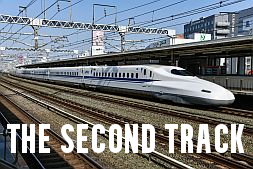Let’s arm Ukraine

The 17 October announcement that Australia would give 49 surplus M1A1 Abrams tanks to Ukraine is welcome, regardless of quibbles over the timeliness of the decision.
Australia’s domestic debate over the process for donating materiel to Ukraine is important, but it mustn’t distract Canberra from the larger strategic task of helping Kyiv to end the war on its terms, which President Volodymyr Zelenskyy’s newly unveiled victory plan has brought back into focus. That requires NATO allies and their Indo-Pacific partners visibly stepping up and pulling together ahead of the US election in November.
Canberra can and should play an outsized role in that process because outcomes in Ukraine affect stability in our region. It needs a long-term approach for doing so.
Australia can never hope to tilt the balance in Ukraine, but these US-made vehicles will make a military contribution on the ground. The donation accounts for the bulk of the 59 Abrams tanks that have been in Australian Army service since 2007. They are being replaced by 75 tanks of the much more advanced M1A2 SEPv3 version of the Abrams, the first batch of which has been received from the US. The fate of the Australian Army’s remaining 10 older Abrams tanks is less clear, but some may conceivably become available for donation to Ukraine once transition to the M1A2 version is complete.
While the tanks are valued at around $245 million, the package does not appear to include funds for training, ammunition, repairs or alterations that improve survivability, such as fitting more armour to counter drones and other anti-tank weapons. But since Ukraine already operates Abrams tanks that the US has donated, it may be well placed to attend to those requirements.
The announcement will not silence calls for a clearer and more consistent approach towards Australia’s support for Ukraine. Andrew Hastie, the shadow defence minister, said the move was ‘better late than never’. But Defence Industry Minister Pat Conroy said the timing reflected the delivery of the newer tanks and the need to obtain permission from Washington, which controls the transfer of military technology.
Donating the tanks conforms to one of the recommendations of a Senate committee that looked at support for Ukraine. Focus will now shift to other equipment slated for retirement, such as the 22 Tiger armed reconnaissance helicopters.
As we’ve argued previously alongside ASPI colleagues, the government needs a prompt and thorough mechanism for screening assistance to Ukraine that covers Australian defence industry capacity and military inventories, generating a long-term pipeline of support. The Australian Defence Force should not surrender kit that it needs; rather, we should nurture our capacity to make and improve equipment for capabilities that we and our democratic partners need.
Australia’s approach to supporting Ukraine needs to be understood by Kyiv, other partners and the Australian Parliament and public. If a robust process is already in place in Canberra, it’s not yet sufficiently transparent to garner widespread trust. That task will remain harder while the Department of Foreign Affairs and Trade continues to delay the reopening of the Australian embassy in Kyiv—a logjam that the government and Parliament should work together to solve by amending health and safety law.
Crucially, capability bucket lists and domestic political scraps must not distract Canberra from the larger strategic goal. Helping Ukraine to end the war on its terms includes restoring deterrence and establishing collective security arrangements as the basis for a durable peace. Zelenskyy’s victory plan, also announced last week, lays out a pathway to achieve that, potentially as early as next year.
The crux of the plan is that Russia must lose the war, as freezing the conflict would embolden further aggression by Valdimir Putin and what Zelenskyy brands the ‘coalition of criminals’ backing Moscow. One of those criminals, Kim Jong Un, should be considered a direct party to the conflict if it’s proven that North Korean troops are operating in Ukraine. Meanwhile, China and Iran continue to ramp up material support.
Zelenskyy is clear that Ukraine’s victory depends on the will of its partners. Encouragingly, Australia’s military aid has no conditions attached beyond compliance with international humanitarian law, which means the tanks may be used to attack and hold Russian territory—one of Zelenskyy’s criteria for forcing the Kremlin’s hand. Our intelligence and security agencies must now redouble their vigilance against Russian retaliation, which might be directed against Australians.
At the strategic level, Canberra’s urgent task is to work with Japan, New Zealand and South Korea to emphasise that a durable peace on Kyiv’s terms is also essential for deterrence in the Indo-Pacific. The inclusion of ministers from those countries in the opening session of NATO meetings on 17 October helps get that message across.
Australia should go further by spelling out a long-term approach, including by joining the over 30 countries that have signing onto the G7 declaration of support for Ukraine. Canberra should also consider forging a bilateral security and defence agreement with Ukraine, following the example of the 26 countries that already have.
This article was written by Alex Bristow and Malcolm Davis and published by The Strategist.
Alex Bristow is Deputy Director of ASPI’s Defence, Strategy and National Security program. His interests include foreign and security policy; the Indo-Pacific region and international human rights







